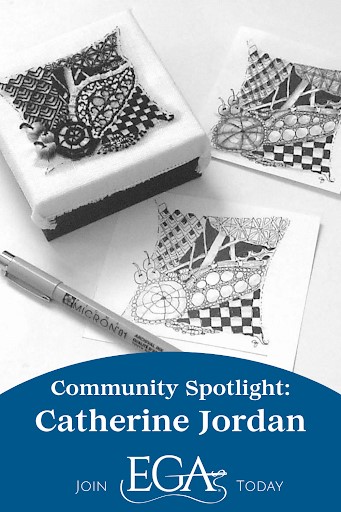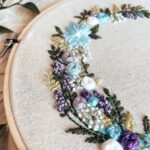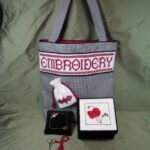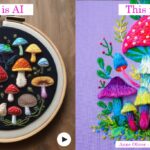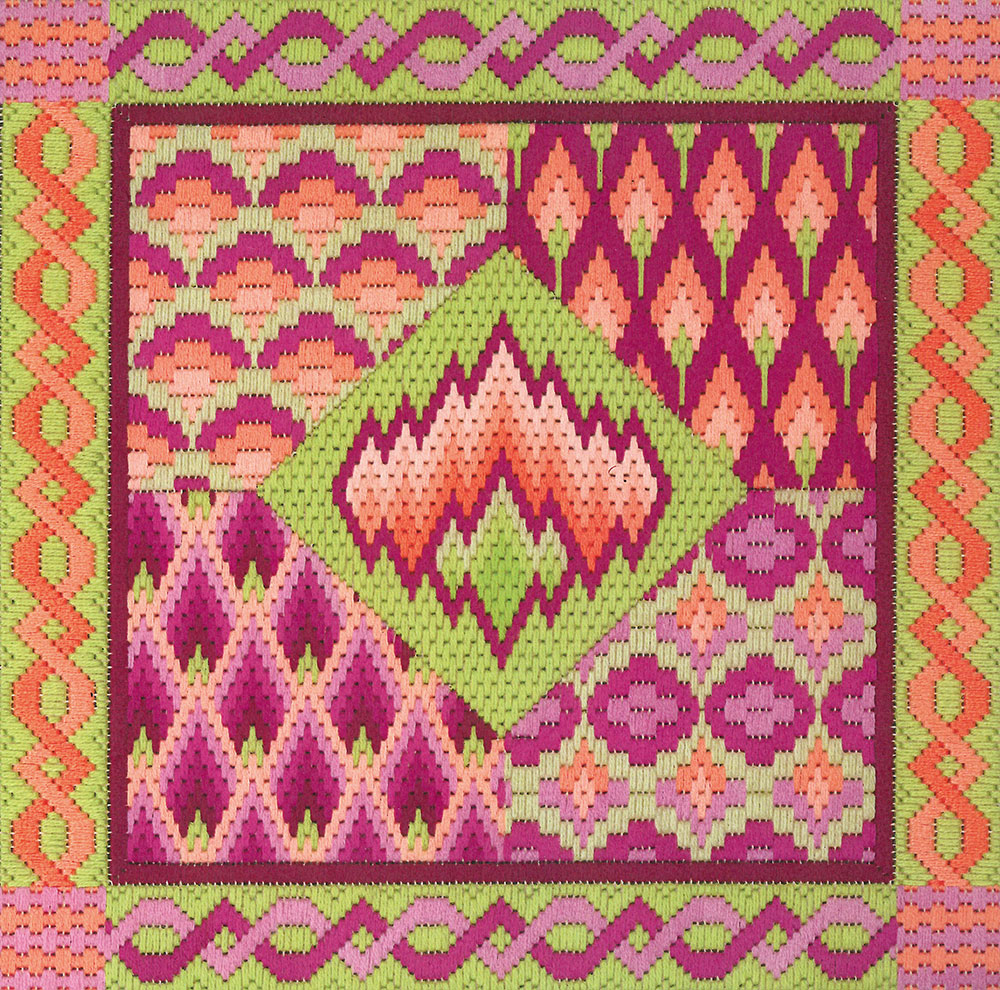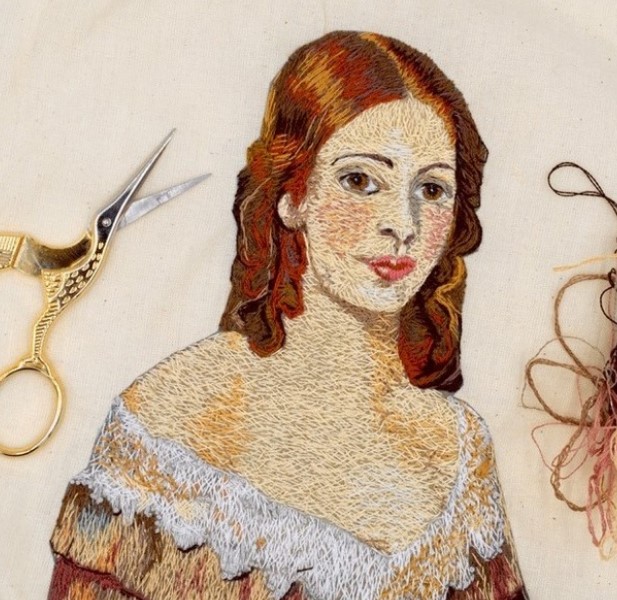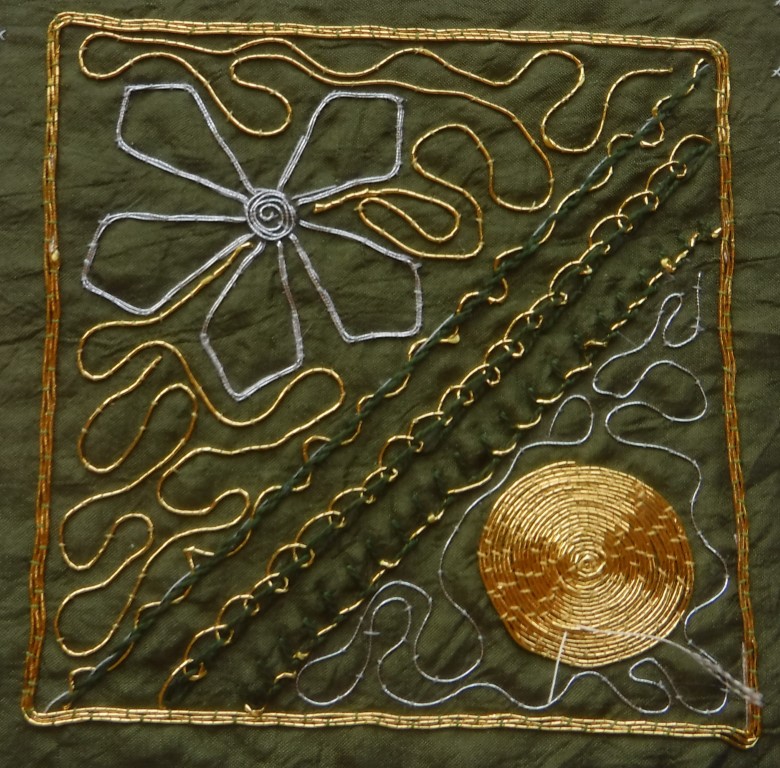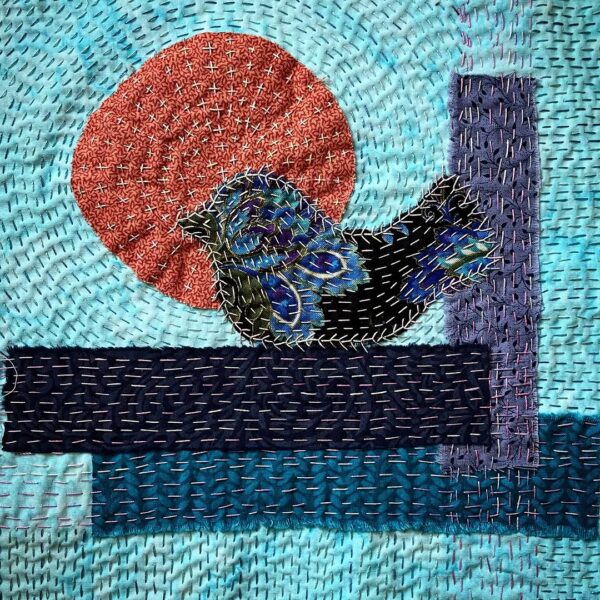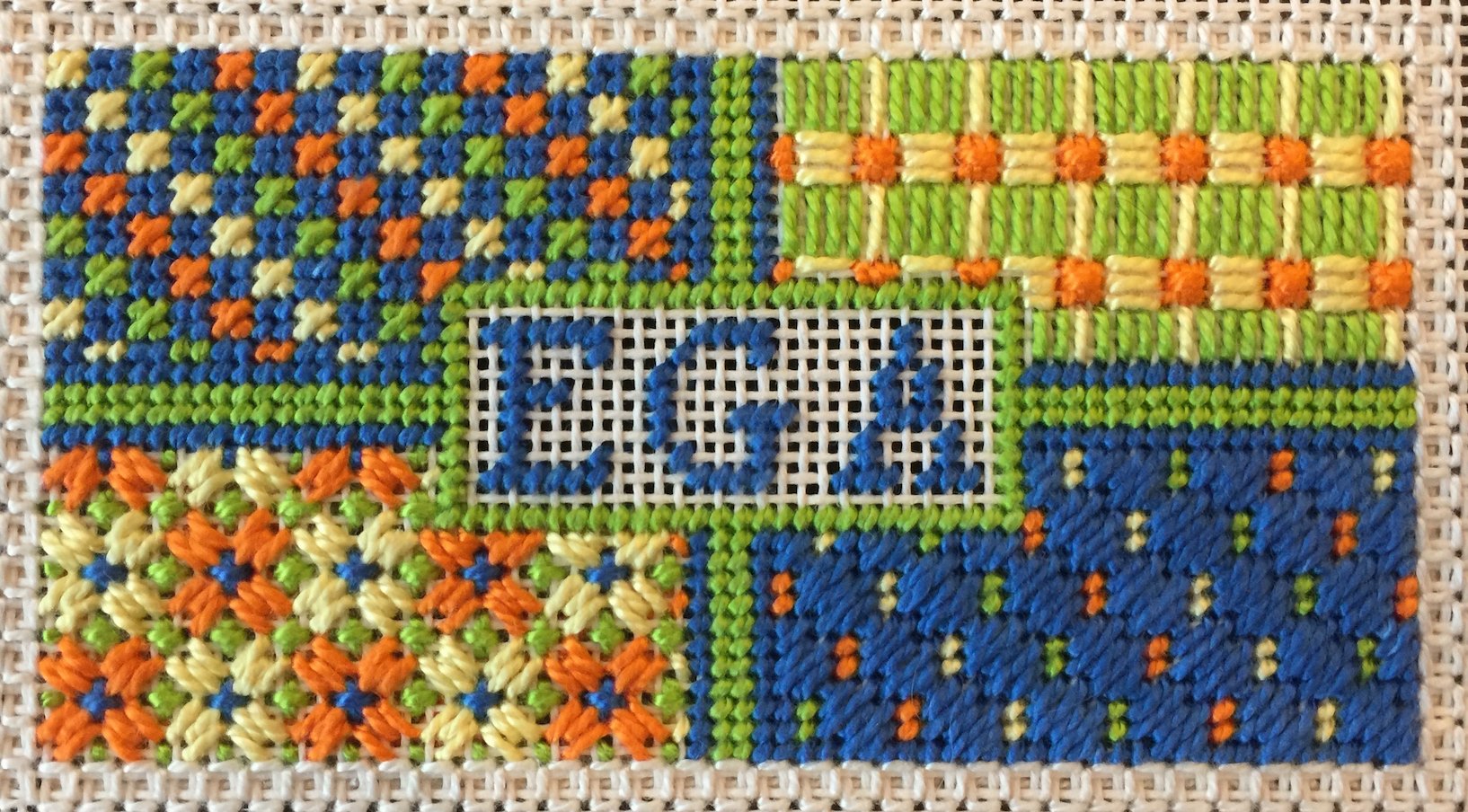Catherine Jordan is a familiar name for EGA members. A frequent teacher and lecturer for EGA (Whale Tale Journal; Creating Needlework Maps with Catherine Jordan), repeat guest on Creative Living, and coordinator of the Master Craftsman program as well as chair of the Master Craftsman Design program, Catherine’s work and designs have influenced the EGA community for decades. Her process takes a multidimensional and multidisciplinary approach, incorporating painting, drawing, dyeing, spinning, needlework, and more to create unique pieces that reflect her life and the world around her. We sat down with Catherine for our Community Spotlight series to learn more about her process and her upcoming projects and events.
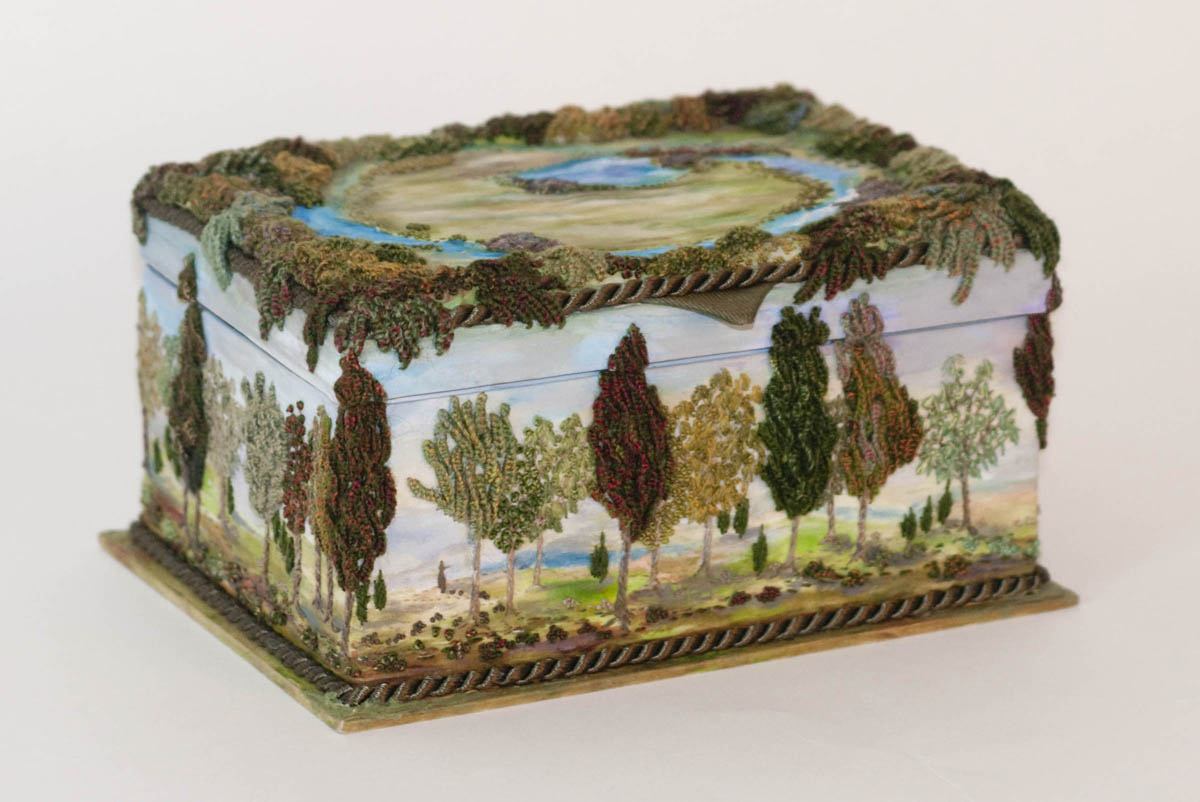
When did your love of embroidery begin?
I watched my mother do a lot of needlepoint growing up, but our overseas trip to visit the Bayeux Tapestry started my interest in embroidery. My mother bought the larger kit at the gift store and I purchased the smaller kit. It seemed like a huge project at the time; I enjoyed stitching the piece, which has a limited number of stitches and colors. This began my interest in all types of embroidery and the historical aspects of needlework. Before too long I was taking classes and became a member of EGA and several other organizations.

You hold Master Craftsman Certifications from EGA in counted thread, crewel, color and design, and chair the Master Craftsman program in Design as well as hold the position of Coordinator of the Master Craftsman programs. Do you have any advice for needleworkers interested in pursuing a Master Craftsman Certification? Was there anything you found surprising about the program when you participated as a student?
My mother enrolled me in the EGA Counted Thread Master Craftsman program very early on; it was a challenging and amazing learning experience. I really didn’t have a good idea of what I was getting into, but each step of the program set out guidelines and expectations. All the programs have wonderful bibliographies which are now available on the EGA web site. If you are interested in taking your work to the next level, the Master Craftsman programs will help you do that; they challenge you to do your best work.
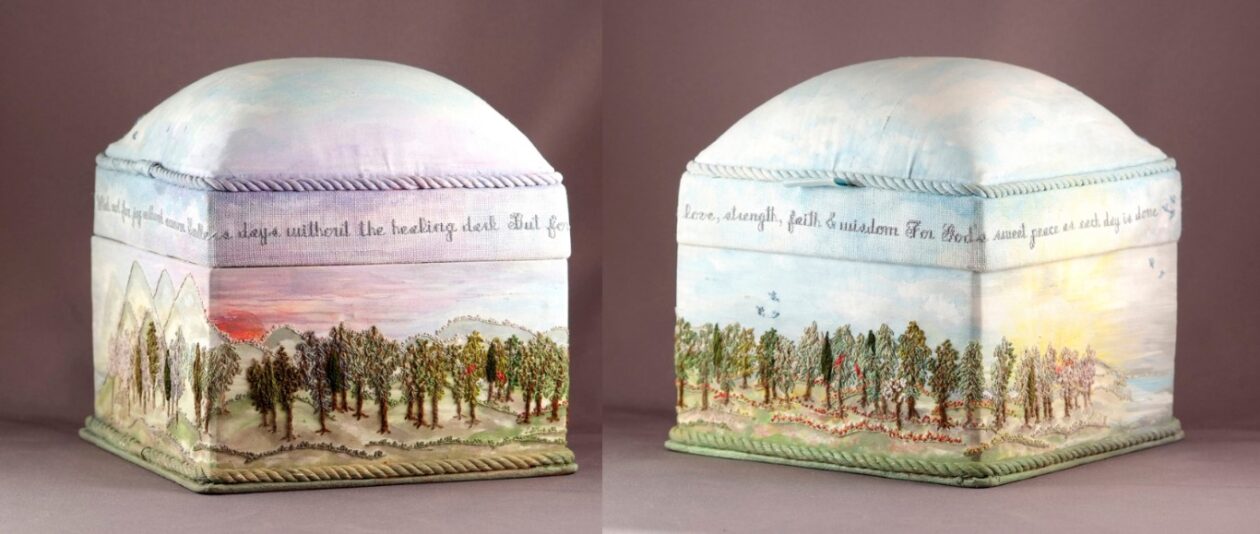
At the time I was enrolled in each program, the next step was always a surprise! I liked the challenges of designing and coming up with new ideas, but it wasn’t easy. I learned very early on that you learn more from your mistakes than your successes. If you want to do better and stretch to do your best, the MC programs are amazing opportunities to do that. I believe some of my best work resulted from lessons I learned in these programs.
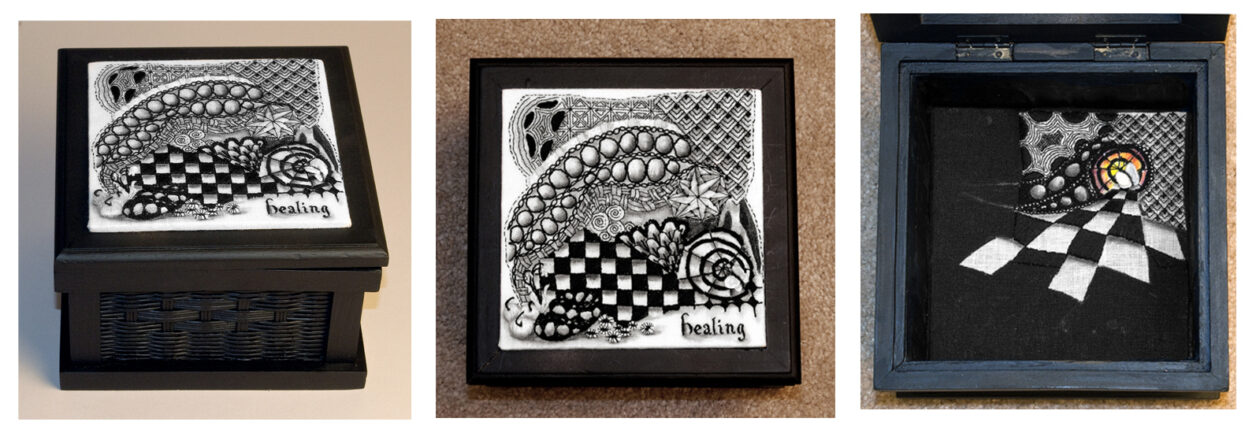
You are also a certified Zentangle® teacher. Zentangle is described as a meditative drawing method that focuses on creating structured patterns that are “non-representational and unplanned.” Since Zentangle seems so improvisational, how do you approach the method in terms of creating a needlework piece? Do you begin a design and see where it takes you, or is your process more structured?
When I first saw Zentangle designs, I thought they were so beautiful and I was intrigued by the patterning, shadows, highlights, and layering effects. I thought how spectacular they could be when interpreted in needlework, which could provide actual texture and layering.
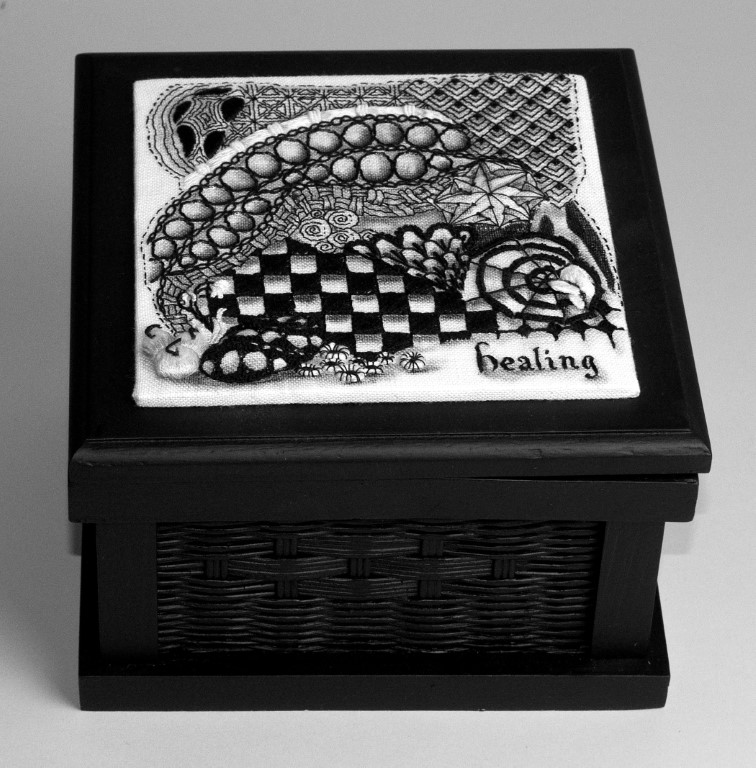
I begin each design with a Zentangle drawing to be sure it is a good and interesting composition and then transfer it to linen. Basic structural lines are drawn and then covered with stitching; patterns are then added using either counted or surface techniques. The addition of padded or detached details adds even further dimension.
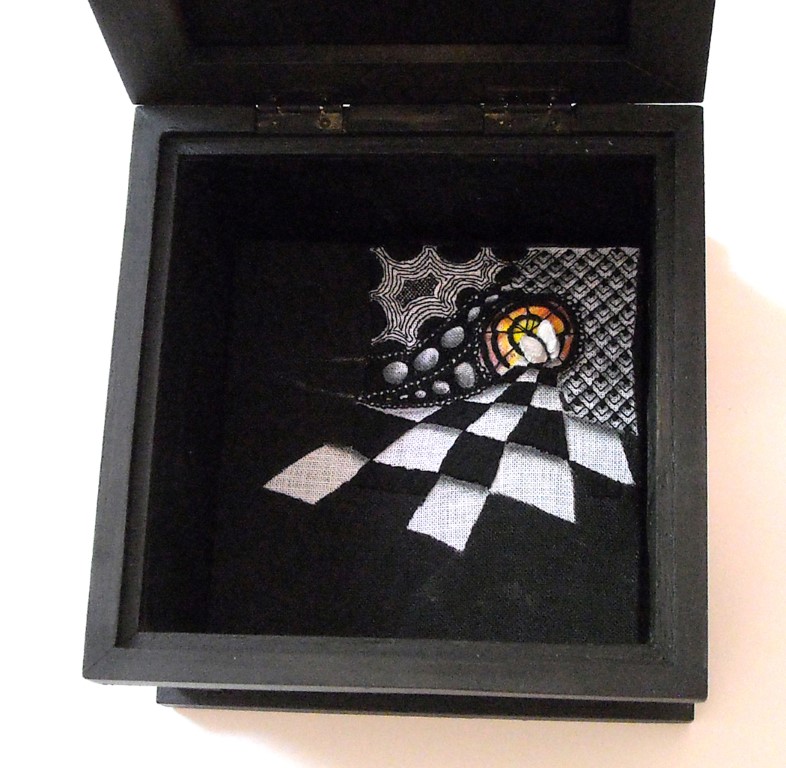
There can be more to making beautiful compositions than simply drawing or doodling randomly. That is why it is so helpful to understand basic design principles, but use them to create what pleases you. Understanding design fundamentals makes designing faster and easier for me and helps me to come up with more visually pleasing compositions.
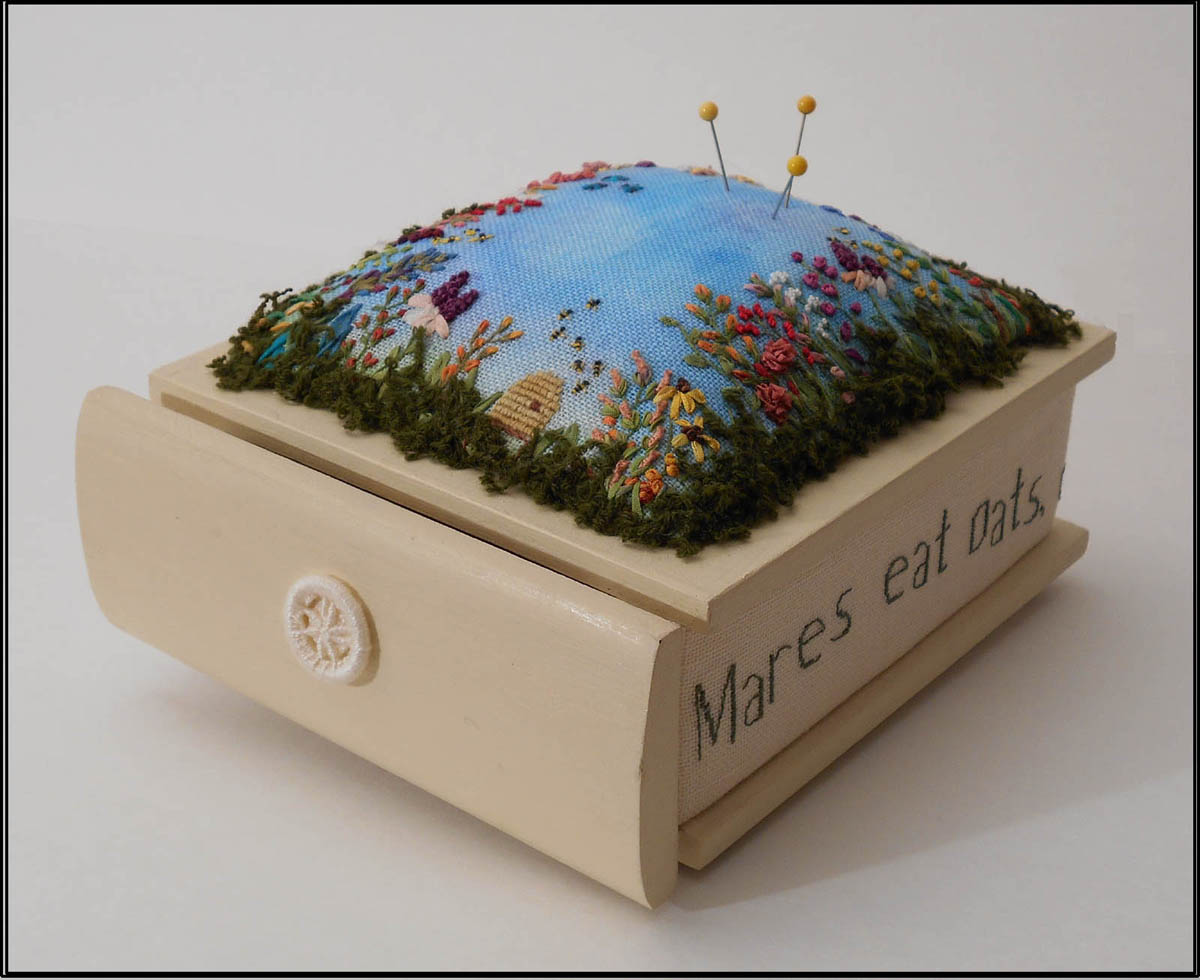
You have a strong affinity for all manner of fiber art, including spinning, knitting, quilting, fabric painting, needlework, dyeing fiber, and felting—all of which seem to support your love for three-dimensional work in particular. Why do you find three-dimensional pieces so arresting?
With 3-dimensional work, there is always a delightful surprise that awaits; a book or box to be opened, a message or picture in a journal, or the back or inside cover of a book! Since the pieces are not framed, they can be held in the hand, making the experience with the piece and thus the artist more personal. It is a wonderful challenge to think of how you can add that special spark to a piece to delight and surprise the viewer.
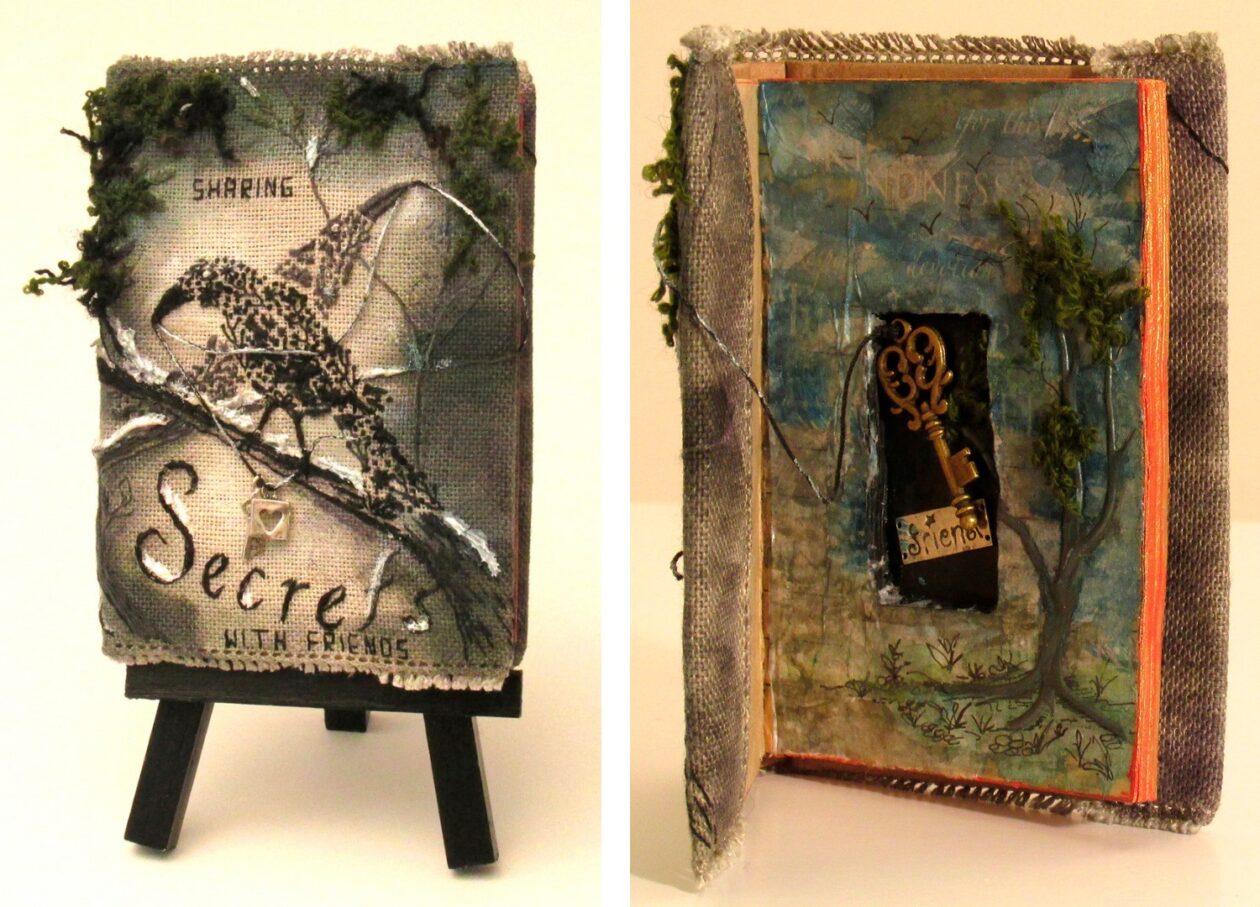
You worked on a farm for many years, tended sheep, and spun and dyed wool from your own flock. You also hand dye linen and threads. Many of us don’t have the opportunity to form such a close relationship with the materials we use to create art. What did that experience teach you about working with fiber?
We live in a rural area of Virginia and for many years I had a small flock of fine fibered sheep and goats. Very early on I learned if not handled gently, the fibers felt; sometimes the animals themselves felt their wool by rubbing and laying down on it. Because of all the wool and hair (mohair) they produced, I took many classes on needle felting, spinning, dyeing, knitting, and almost anything to use the fibers the animals were producing.
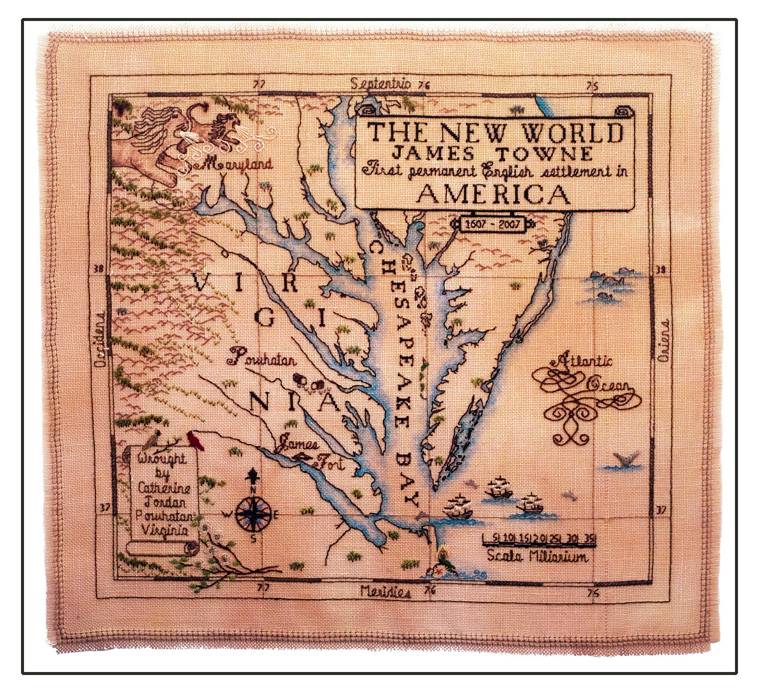
You’ve created several hand painted and embroidered maps: to celebrate the 400th anniversary of Jamestown, Virginia; the 1608 founding of Quebec; the 50th anniversary of Woodlawn, Virginia; a Florida Needlework Map commemorating the 500 year anniversary of Ponce de Leon’s landing in 1513; and others, and led a popular virtual lecture for EGA about Creating Needlework Maps. What sparked your interest in creating embroidery maps?
The 400-year anniversary of the founding of Jamestown, the first permanent English settlement in North America, began my interest in needlework maps in 2007. It was a very big event here in Virginia and I wanted to commemorate the event with needlework. I could not think of a sampler or other form of needlework appropriate to the period, but then thought most people didn’t know exactly where Jamestown was located; thus, the idea to create a map showing its location and representing the vintage look of linen from 400 years ago.
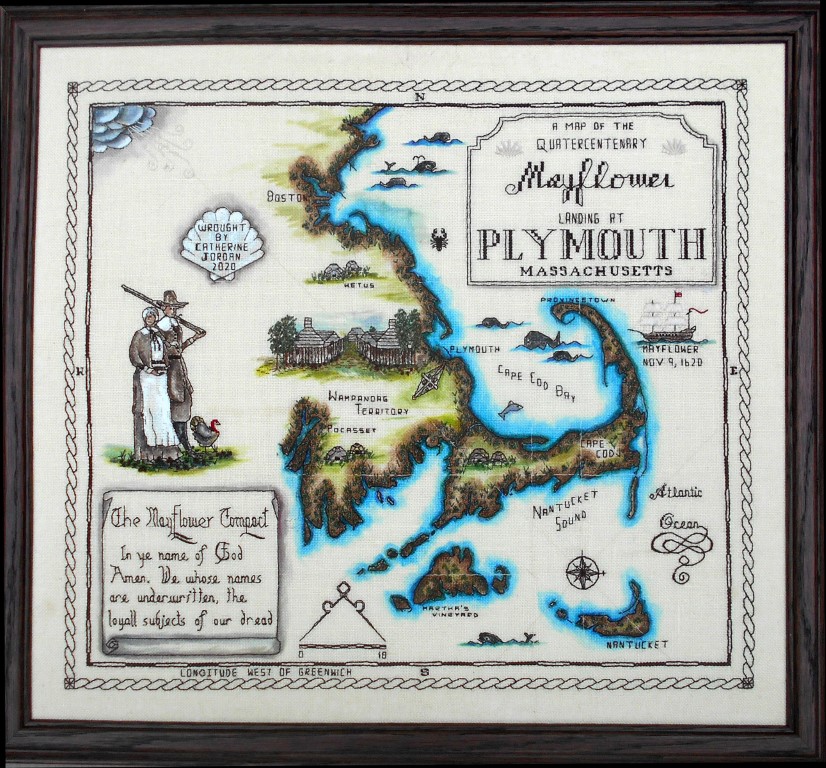
By the way, this piece began my use of textile painting on linen. Once the map was completed using only stitching, it was quite ordinary looking. I came across the Jacquard® textile paints, added blue water, and that brought the map to life. After that I kept using the paints to enhance my designs.
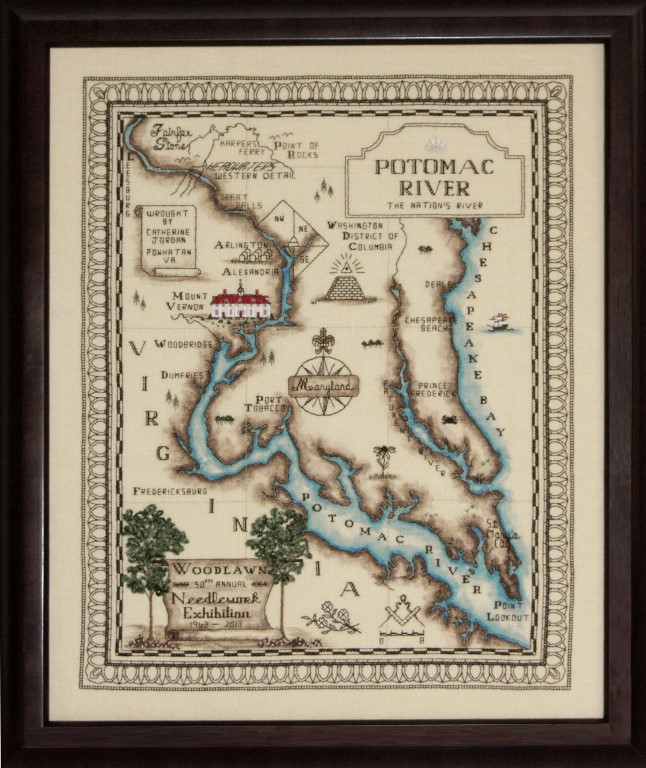
Many of your needlework pieces incorporate painting. Why do you choose painting on fabric with acrylic for certain projects rather than using fiber or needlework techniques?
I use the various techniques in layers, many times starting with a painted background and then adding stitching on top for outlining, color, texture, dimension, and emphasis; then techniques such as padding (front and/or underneath) and stump work for leaves or berries embellish the layering even more; finally, the addition of shadows and highlights with paint gives one more dimension to the design.

Note that the use of paint does not add any texture like thread and fiber do, making it the perfect medium for adding shadows, shading, and highlights which lay flatly on a surface; also, paints can be applied transparently or opaquely, so there are many choices for adding realistic effects such as shadows, shading, and highlights.
With so many different artistic passions, we’re curious: What are you really excited about at the moment? What are you working on right now?
Whatever I am working on at the moment is the thing that gets me up and excited to start the day. Our chapter, Gentle Pursuits of Richmond, has an Outreach program to stitch on bibs, so I am working on a few of those; nothing fancy, but simple and easy stitching to give away. I have a friend who needle felts and I have done some small watercolor paintings (very primitive) for us to use as guides for a series of coasters highlighting sunflowers. I am working on developing a Zentangle GCC called Finding Time and hope that will be accepted. I keep a journal and jot down ideas so that I have several projects going on all at the same time.
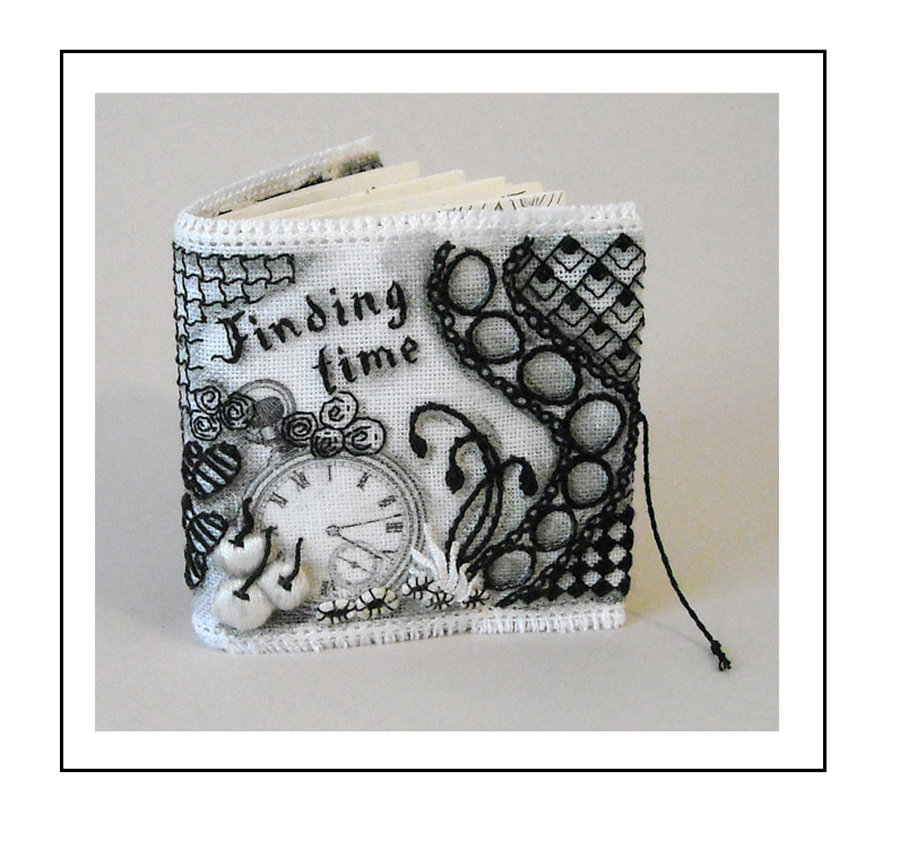
Do you have a daily or weekly artistic practice? What does that look like?
Each morning I wake up early to enjoy quiet time to design, stitch, or paint, and enjoy a wonderful cup of coffee. An hour or two is devoted to this before computer time to answer emails and work on class materials. We live in a rural setting as I mentioned earlier, so days are filled with walking our dog, hikes at local parks, and enjoying the woods filled with lots of wildlife. I try to be observant of sources of inspiration in nature, so you will see trees, flowers, and paths frequently in my work.

Do you have any upcoming classes or events that we should know about?
I am working on the upcoming GCC class and have some lectures scheduled for chapters on Creating Needlework Maps via Zoom. I have 3 other Zoom lectures available: Needlework Boxes, Needlework Book Covers, and Plan to Finish First (an exploration into alternate finishing ideas). If any chapter is interested in a class or lecture they can email me for details.
Where can interested needleworkers find and follow you online?
I have a Facebook page where I post upcoming classes and information, or I can be reached by email. My contact information is on the EGA website.

What advice would you offer new needleworkers looking to expand their skill set? Did you receive any great advice when you first started?
I found that taking every class you can is the best way to learn. If you don’t know how to do something, sign yourself up for classes. I was at a county fair many years ago and saw a woman spinning; I had no idea how it was done, but after a few lessons I learned, bought 2 spinning wheels, sheep, and goats and then started teaching other people how to do it, making some good friends along the way. Surround yourself with other people who share your passion.
